Laboratories for Environmental Science and Engineering are located on the first and ninth floor of West Siyuan Building in Weihai campus. The usable area of the laboratories is more than 1500 square meters, and the total fixed assets are nearly 7 million yuan. Aiming at supporting undergraduate experimental teaching and improving students' innovation and practice ability, the laboratories undertake about 50 undergraduate teaching experiments in 11 courses, including Environmental Monitoring, Environmental Analytical Chemistry, Principles of Environmental Engineering, Water Quality Engineering, Environmental Microbiology, Aquatic Biogeochemistry and Soil Science, etc. The laboratories also undertake graduation design, innovative experiments, subject competitions and other academic activities.
1. Laboratory Introduction
The laboratory of Environmental Science and Engineering is located on the 1st and 9th floors of Siyuan West Building on Weihai Campus. The laboratory covers an area of more than 1500 square meters, with total fixed assets of nearly 7 million yuan. With the purpose of supporting undergraduate experimental teaching and the goal of improving students' innovation and practical ability, the Laboratory of Environmental Science and Engineering currently undertakes more than 50 undergraduate teaching experiments of 11 courses, including environmental monitoring, environmental analytical chemistry, principles of environmental engineering, water quality engineering, environmental microbiology, aqueous biogeochemistry, soil science, as well as a number of academic activities, such as graduation design, college students' innovation experiments and disciplinary competitions. Academic Activities
2. Functional Laboratories
The main function of the Environmental Science and Engineering Laboratory is to undertake the experimental teaching work for undergraduates majoring in environmental engineering, to train students to master the basic experimental methods in the field of environment and the use of basic experimental instruments, to enable students to propose experimental solutions to problems in the field of environment and to independently carry out experimental operations and analyses. Through experimental teaching and innovation training, students' hands-on ability and innovation ability are improved.
2.1 Regional Environmental Laboratory
Regional environmental laboratory is built according to the British experimental teaching method, with an area of 110 square meters. The laboratory is equipped with basic experimental facilities such as fume hoods, laboratory cabinets and multimedia projection facilities, as well as various instruments and equipment such as electric blast drying oven, pH analyzer, conductivity meter, analytical balance, etc., which mainly support the British experimental teaching courses of aquatic biogeochemistry, hydrology, and so on.
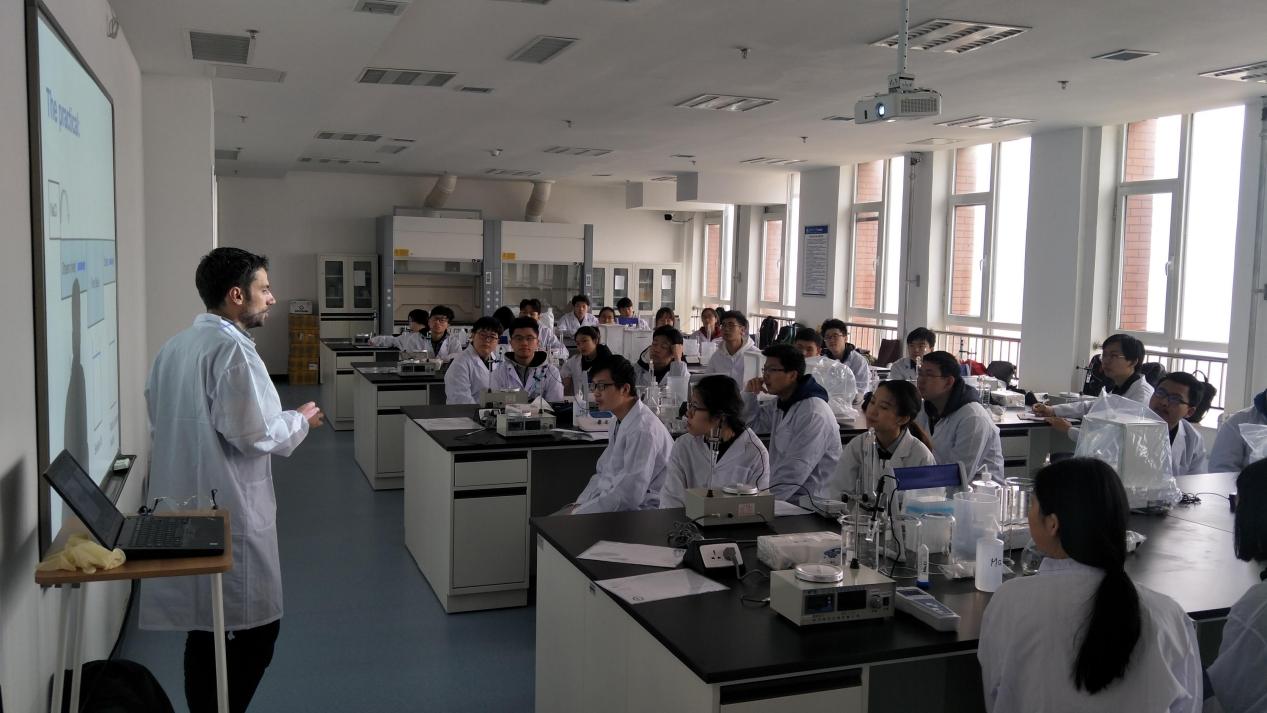
Regional Environmental Laboratory
2.2 Environmental Hydrology and Biology Laboratory
The Environmental Hydrology and Biology Laboratory is built in accordance with the British experimental teaching method, with an area of 110 square meters. In addition to basic laboratory facilities such as fume hoods, laboratory cabinets, and multimedia projection facilities, the laboratory is also equipped with instruments such as infiltrometers, soil moisture meters, GPS compasses, anemometers, centrifuges, and UV-visible spectrophotometers, which are mainly used to support the British experimental teaching courses in soil science.
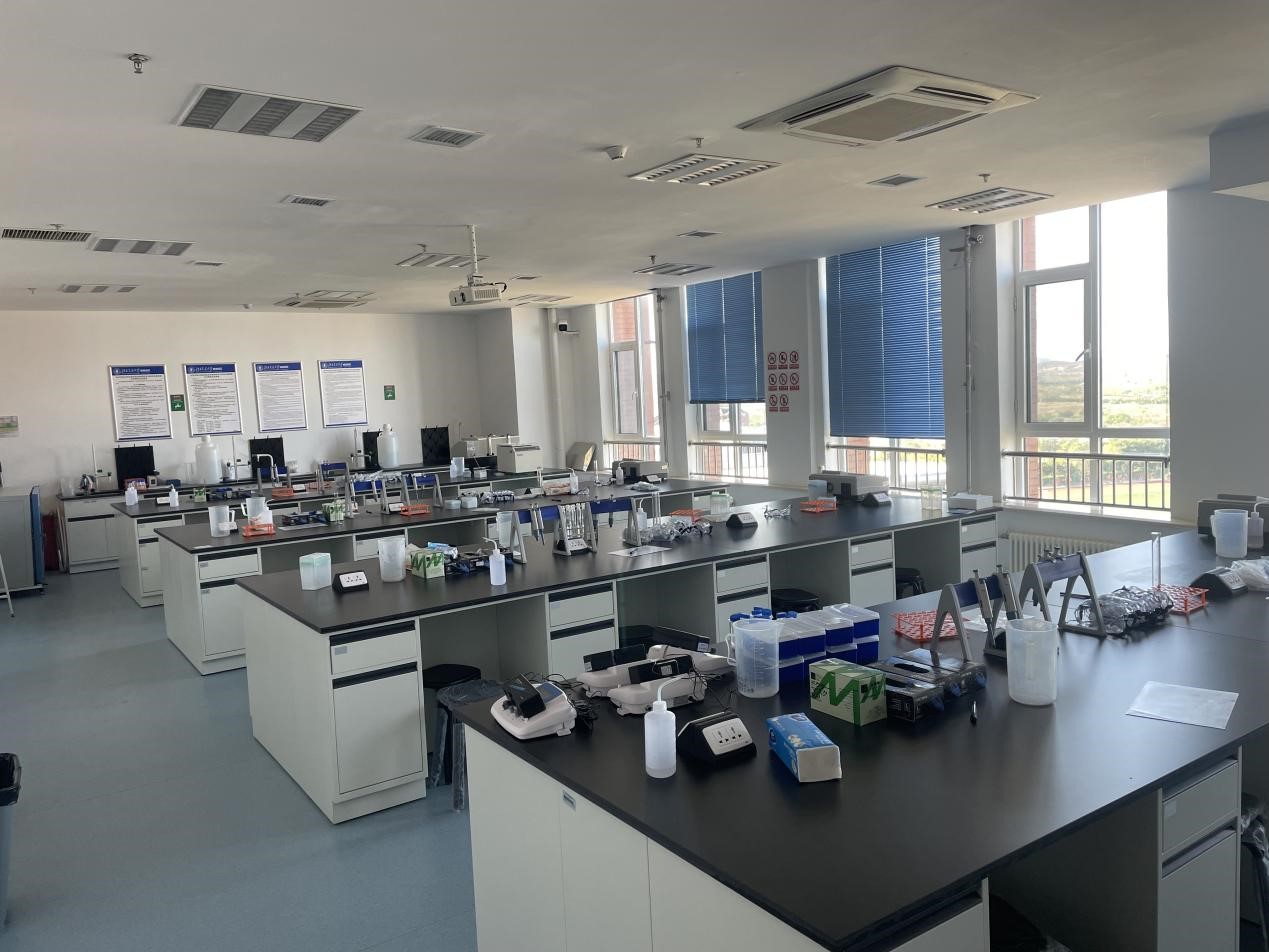
Environmental Hydrology and Biology Laboratory
2.3 Environmental Microbiology Laboratory
The Environmental Microbiology Laboratory covers an area of 120 square meters. In addition to basic laboratory facilities such as fume hoods, laboratory cabinets, ultra-clean workbenches and multimedia projection facilities, the laboratory is also equipped with various instruments and equipment such as binocular microscopes, electrically heated drying ovens, incubators and bacterial counters, which are mainly used to support the environmental microbiology laboratory teaching courses.
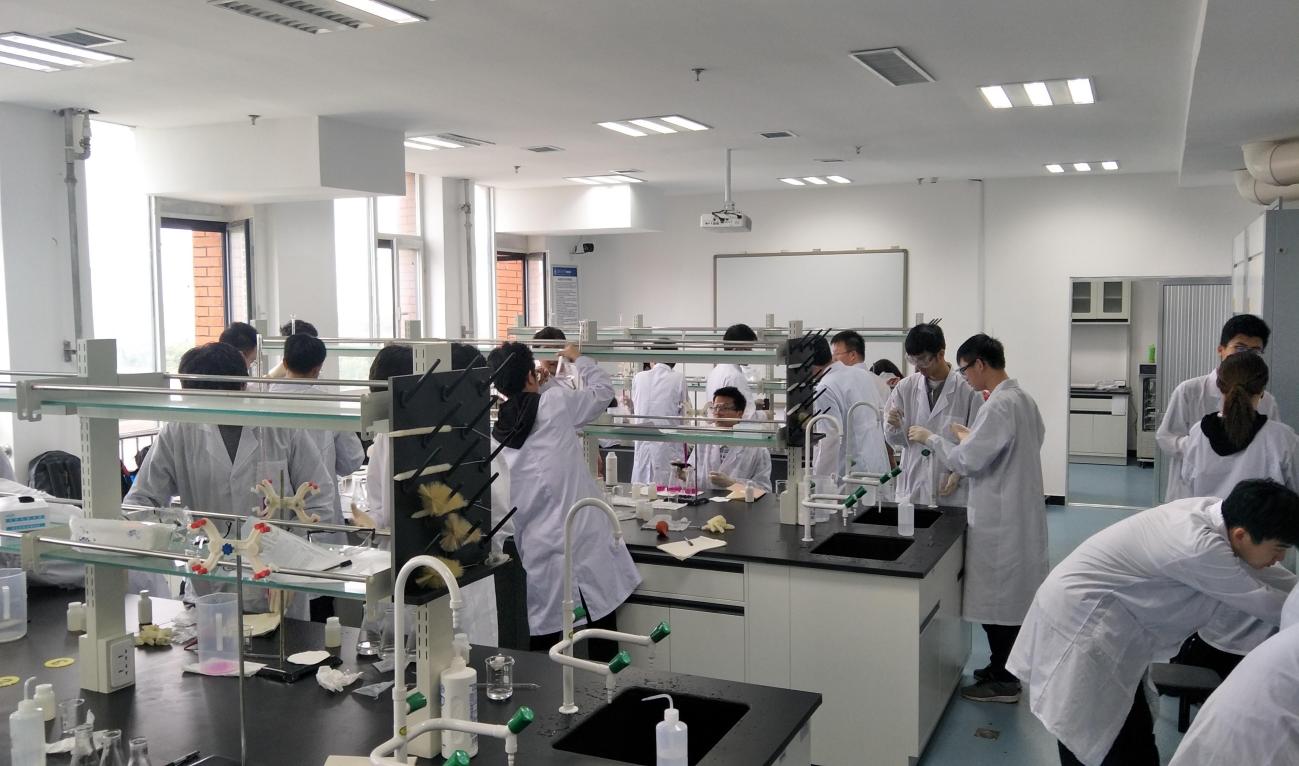
Environmental Microbiology Laboratory
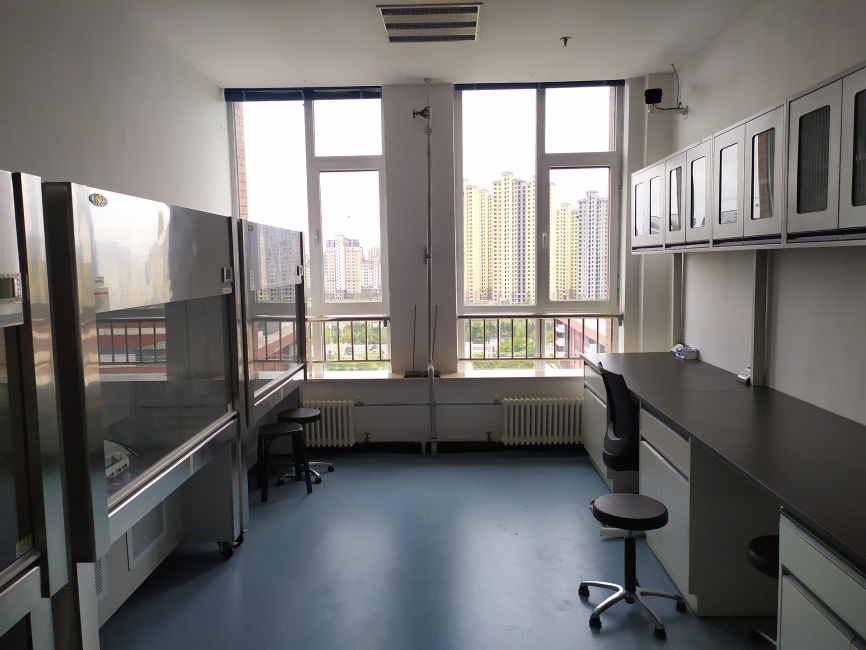
Ultra-clean bench
2.4 Environmental Monitoring/Analytical Chemistry Laboratory
The environmental monitoring/analytical chemistry laboratory covers an area of 120 square meters. In addition to fume hoods, laboratory cabinets and multimedia projection facilities, the laboratory is also equipped with turbidity meters, portable multi-parameter water quality analyzers, BOD meters, noise meters, air sampling meters and other instruments and equipment, mainly to support the experimental teaching of environmental monitoring, environmental analytical chemistry, and traffic pollution control engineering and other courses.
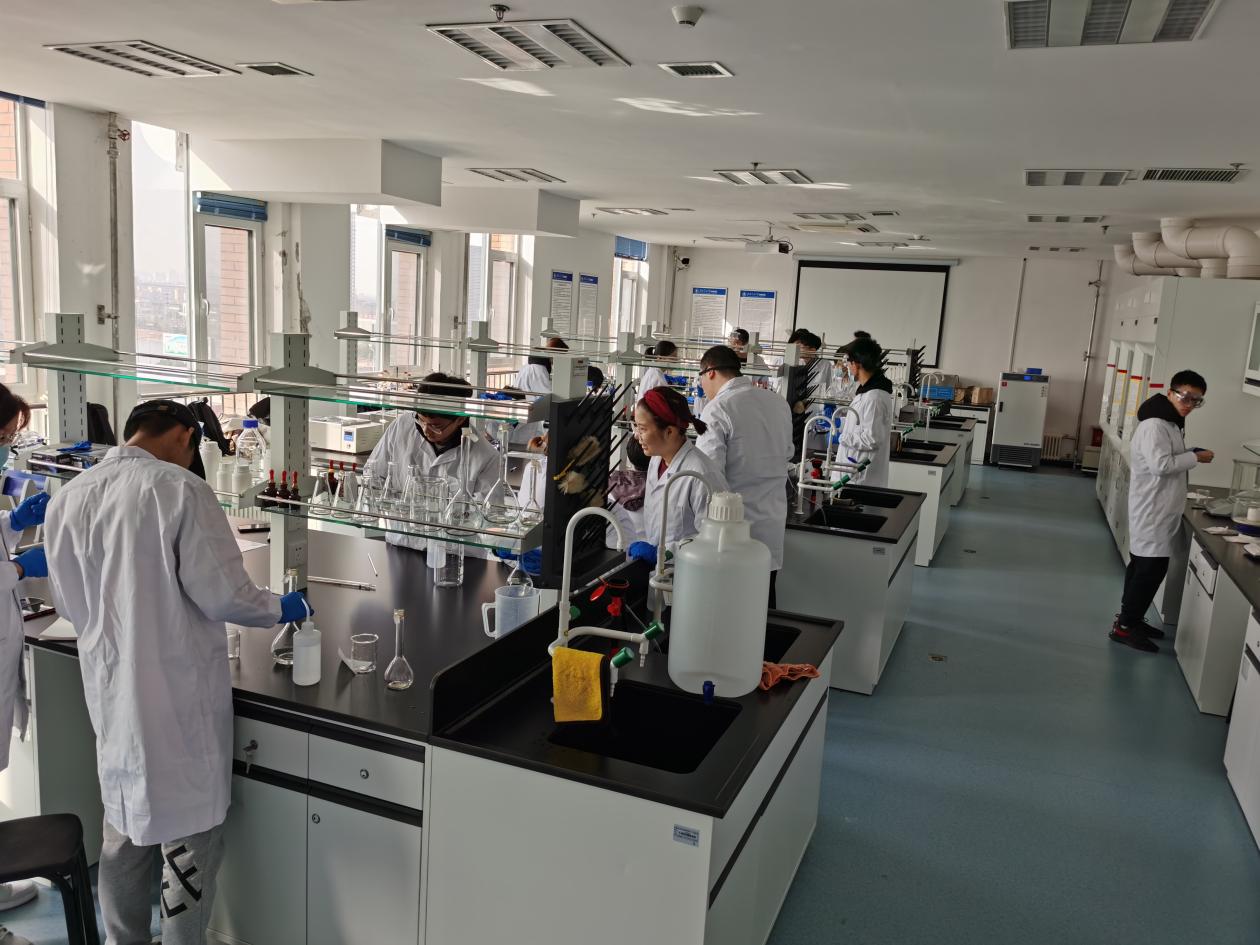
Environmental Monitoring/Analytical Chemistry Laboratory
2.5 Environmental Engineering/Water Quality Engineering Laboratory
The environmental engineering/water quality engineering laboratory covers an area of 270 square meters. The laboratory is equipped with infrastructure such as experimental tables and cabinets and teaching equipment such as multimedia projection, as well as large-scale practical models related to environmental engineering such as hydraulic circulation clarifier experimental device, filtration and backwashing experimental device, ion exchange experimental device, free settling experimental device, aeration and oxygenation capacity determination device, as well as electrothermal constant-temperature blower drying oven, electrical conductivity meter, vacuum filtration device, and dissolved oxygen meter, UV-visible spectrophotometer and other instruments and equipment, mainly to support the principles of environmental engineering, water quality engineering Ⅰ, water quality engineering Ⅱ and other courses of experimental teaching.

Environmental Engineering/Water Quality Engineering Laboratory
2.6 Instrument Room 1
Instrument room 1 covers an area of 40 square meters. In addition to fume hoods, universal fume hoods, lab bench cabinets and other infrastructures, the laboratory is also equipped with molecular fluorescence spectrometer, total organic carbon analyzer, multi-functional enzyme labeling instrument, gas chromatography analyzer, ion chromatography analyzer, high-performance liquid chromatography analyzer, rotating disc electrode, PCR amplifier, gel imager and other instruments and equipments, which can not only effectively support the undergraduate environmental engineering courses, but also support the experimental teaching and graduation design experiments. These instruments and equipments can not only effectively support the undergraduate laboratory teaching and graduation design experiment of environmental engineering, but also meet the needs of college students' innovative experiments, which greatly enriches the experimental contents of the students and improves their hands-on ability.
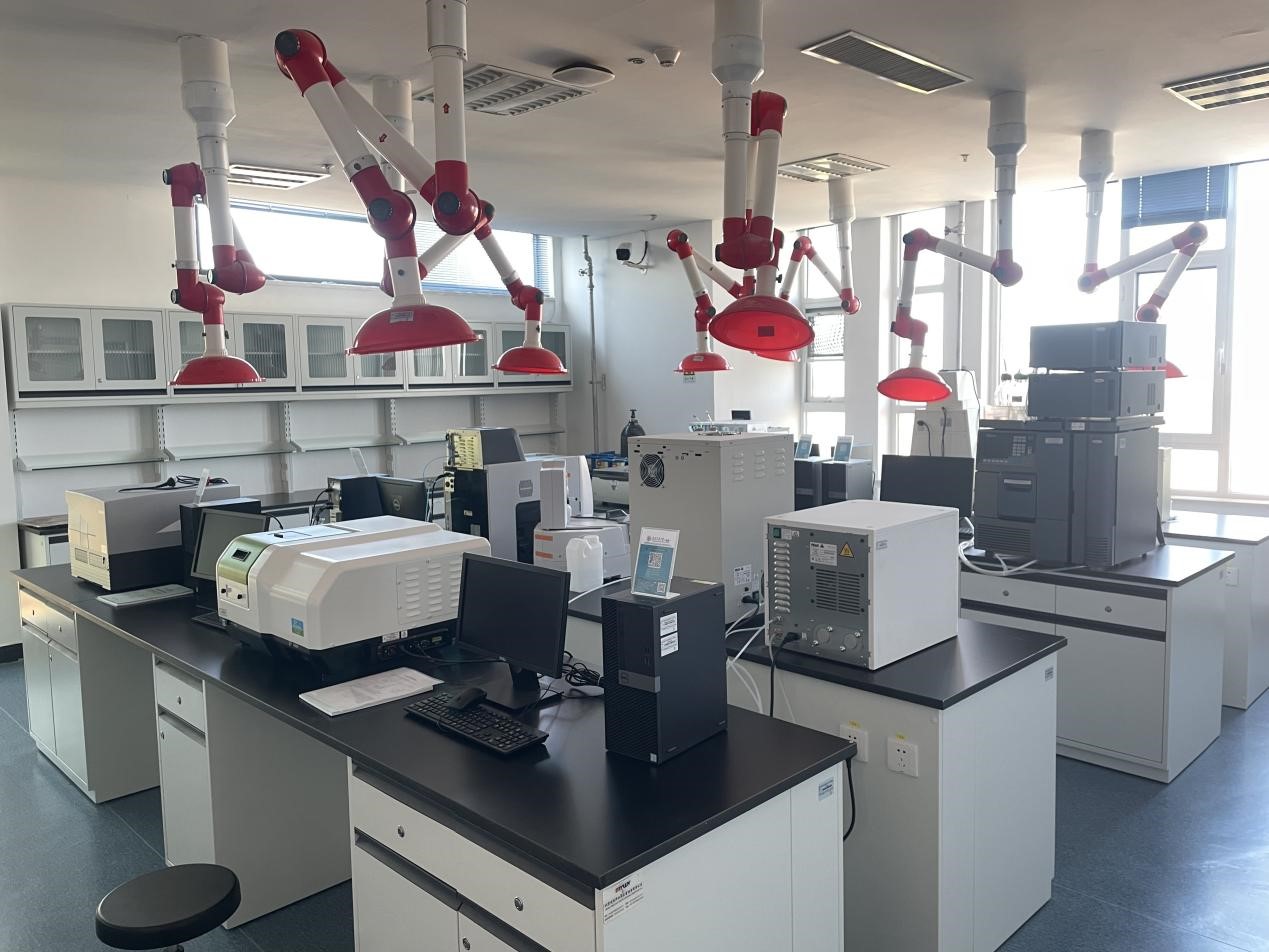
Instrument room 1
2.7 Instrument Room 2
Instrument room 2 covers an area of 40 square meters. The laboratory is equipped with infrastructure such as universal ventilation hood, experimental tables and cabinets, as well as various instruments and equipments such as high-speed freezing centrifuge, full-scan spectrophotometer, UV-visible spectrophotometer, ultrasonic crusher, fluorescence microscope, freeze dryer, etc. These instruments not only can effectively support the undergraduate experimental teaching of the environmental engineering major, graduation design experiments, but also can meet the needs of college students' innovative experiments, and improve the hands-on ability and professional skills of the students. These instruments can not only effectively support the undergraduate laboratory teaching and graduation design experiments, but also meet the needs of innovative experiments for college students, and improve students' hands-on ability and professional skills.

Instrument room 2
2.8 High-temperature Instrument Room
The high-temperature instrument room covers an area of 60 square meters. The laboratory is equipped with infrastructure such as universal ventilation hoods, experimental tables and cabinets, as well as high-temperature and high-pressure instruments such as autoclaves, muffle furnaces and vacuum drying ovens, etc., which provide a special place for high-temperature and high-pressure experiments, and further guarantee the safety of the laboratory.
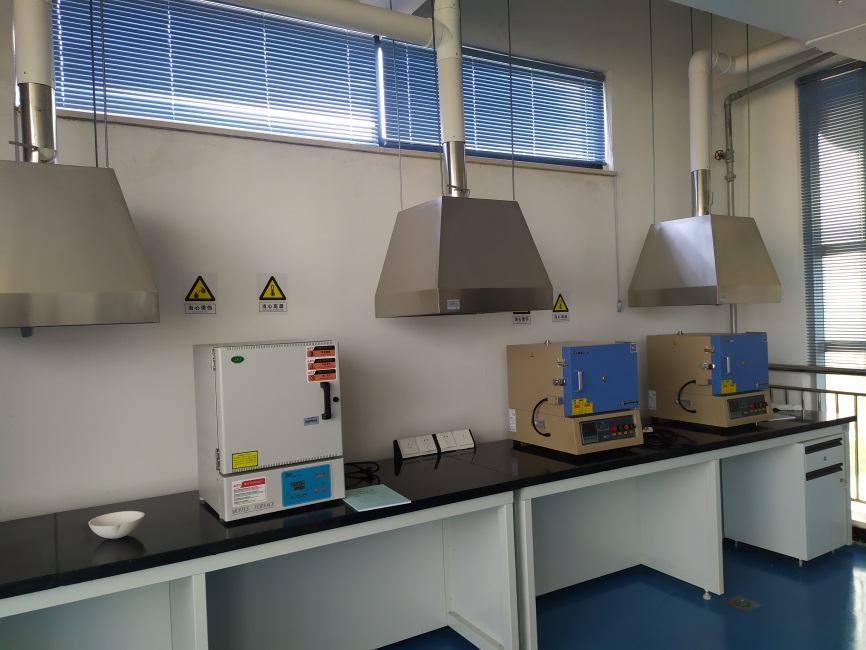
High-temperature instrument room
2.9 Medicine Room
The medicine room covers an area of 17 square meters. The laboratory is installed with infrastructure such as ventilation ducts, explosion-proof doors, explosion-proof lights, monitoring cameras, etc. Meanwhile, it is equipped with double-locked intelligent hazardous chemical cabinets, which can record the whole process of the outgoing and incoming of chemicals and provide guarantee for the safety of laboratory chemicals.
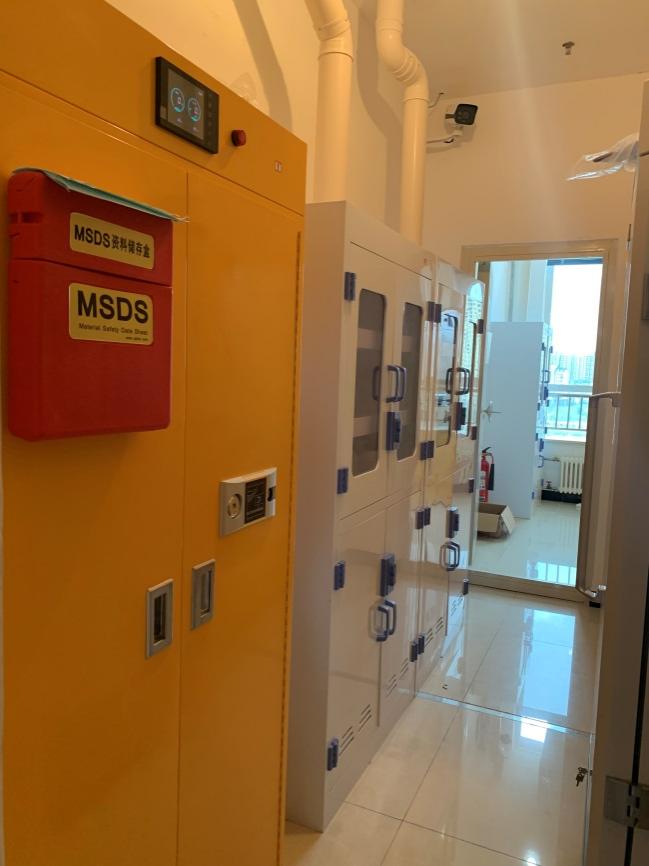
The medicine room
2.10 Water Quality Analysis Room
The water quality analysis room covers an area of 90 square meters. The laboratory is equipped with infrastructure such as universal fume hood, fume cupboard, experimental bench cabinet, etc. It is also equipped with various instruments and equipments such as electric drying oven, analytical balance, vacuum filtration device, UV-visible spectrophotometer, etc., which mainly support the experimental teaching of the courses of Principles of Environmental Engineering, Water Quality Engineering Ⅰ, and Water Quality Engineering Ⅱ.
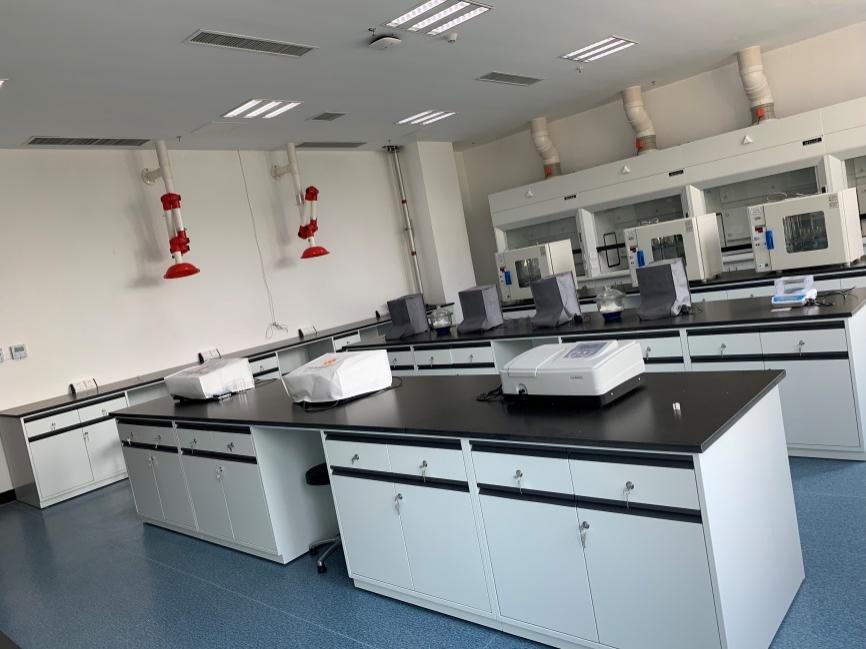
Water Quality Analysis Room
2.11 Innovation Activity Room
The innovation activity room covers an area of 310 square meters, which is equipped with basic experimental facilities such as laboratory cabinets and exhaust fans, as well as a variety of instruments and equipments such as digestion instrument, electric drying oven, constant temperature incubator, ultra-low temperature refrigerator, etc. It is mainly used to support the graduation design experiments, college students' innovation experiments and disciplinary competitions, and to provide a platform for innovation and practice for the students.
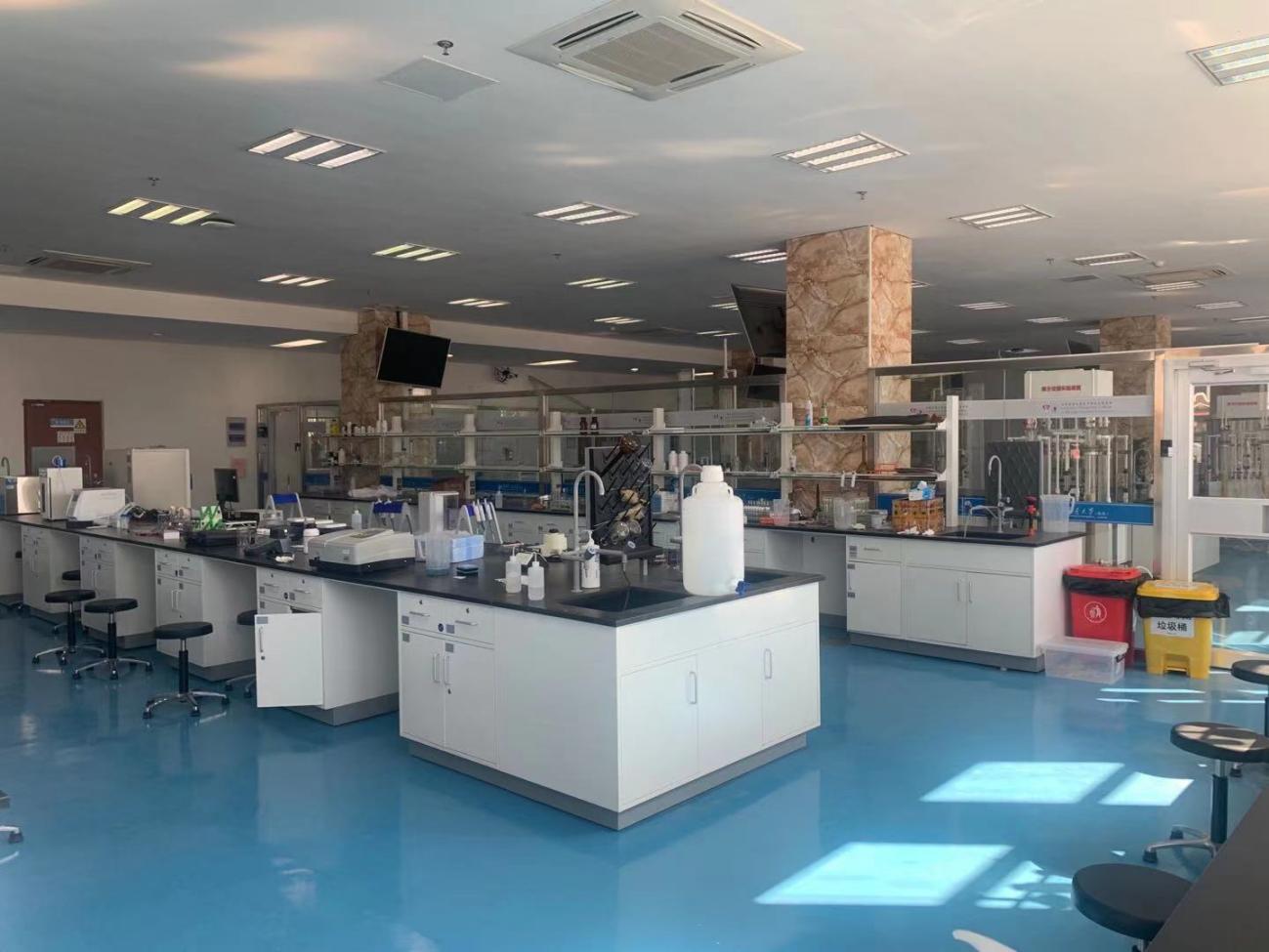
Innovation Activity Room
2.12 Seminar Room
The seminar room covers an area of 40 square meters and is equipped with workstations, bookcases, multimedia projection facilities, etc. It is mainly used for discussions and exchanges on experiments between teachers and students.
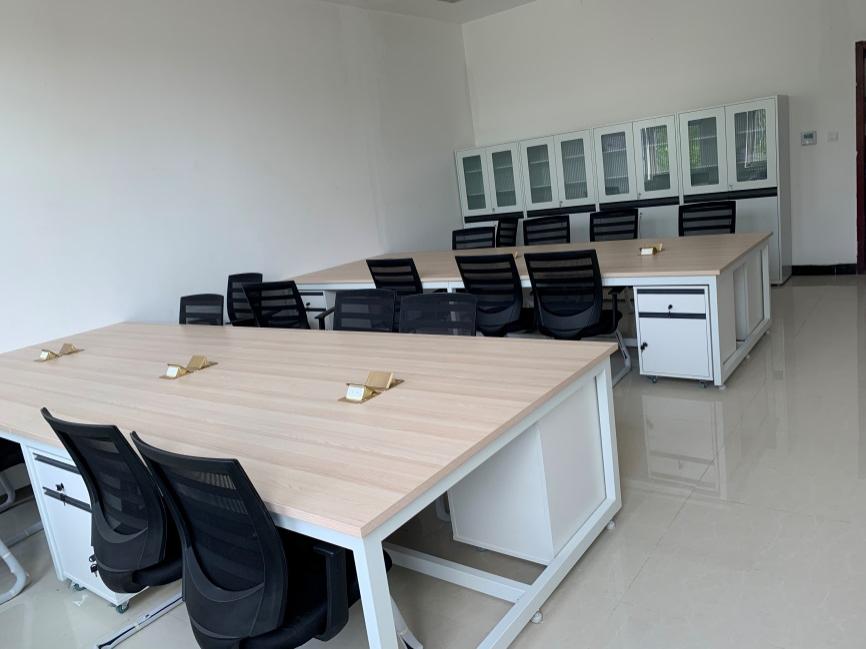
Seminar Room

